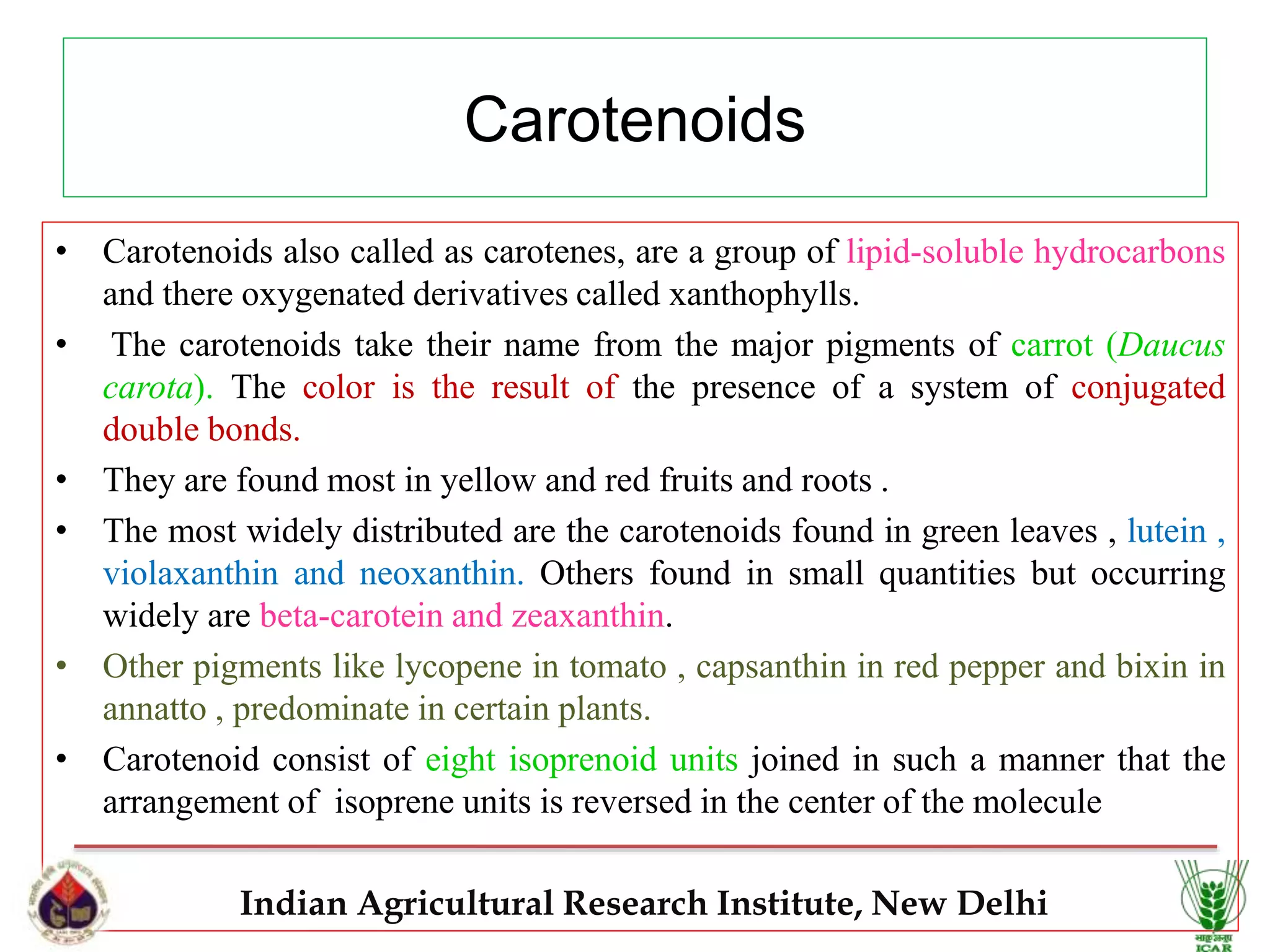Natural colorants are derived from plants, insects, animals and minerals. The document discusses the major classes of natural colorants - tetrapyrrole compounds (chlorophyll, hemes, bilins), isoprenoid derivatives (carotenoids), benzopyran derivatives (anthocyanins, flavonoids), and a few others. It provides details on the structure, sources and applications of specific colorants like chlorophyll, carotenes, anthocyanins, betalains, annatto and saffron. The document concludes with a brief overview of permitted natural colorants in foods in the EU and US and examples of some foods and the maximum allowed levels of natural colorants.






















































